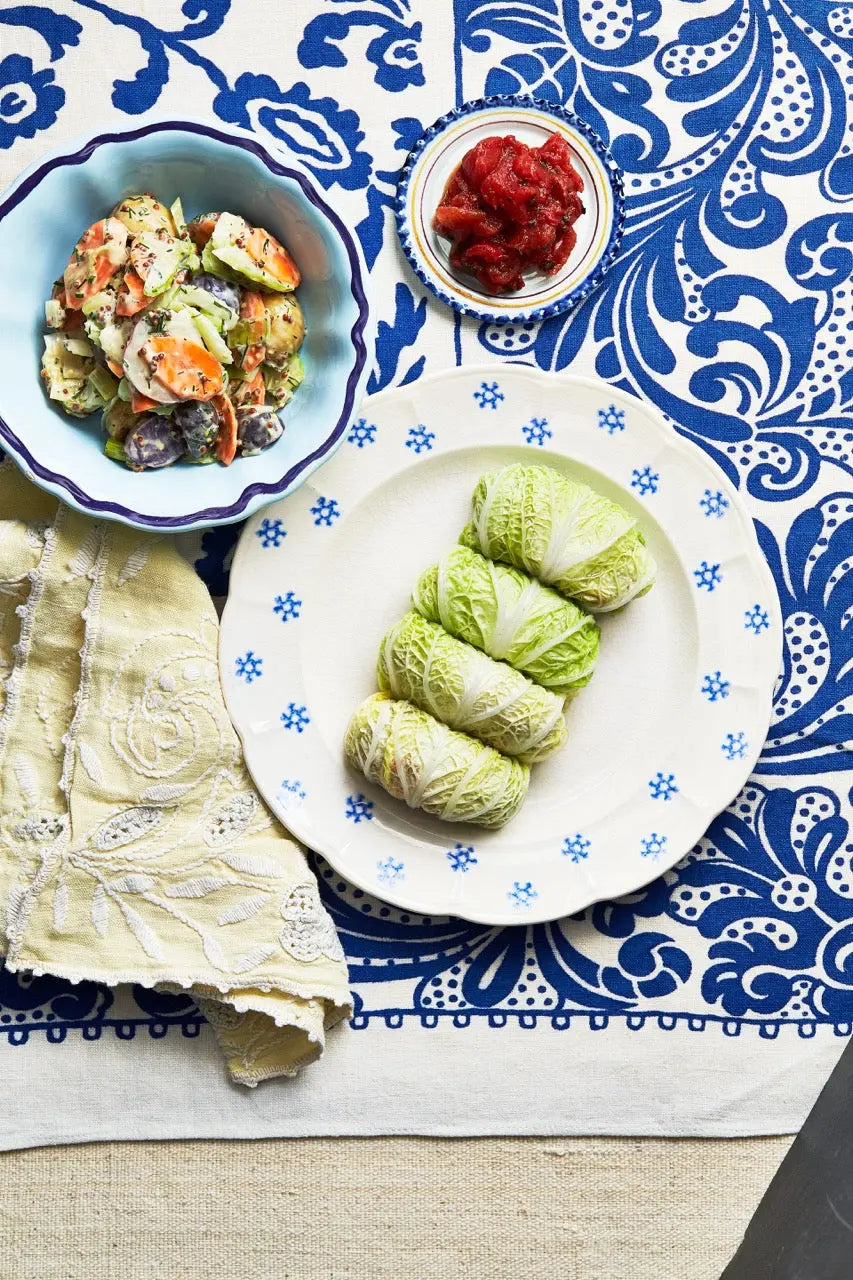Let It Roll: All About Gołąbki, A Polish Family Tradition

Given that they’re a year-round staple of the Polish table, it’s somewhat surprising that gołąbki (pronounced go-WUMP-kee), or stuffed cabbage rolls, aren’t as well known outside Poland as pierogi, kielbasa, and pączki. This no-frills comfort dish is, despite its debated geographic origins, a wholly Polish symbol for family togetherness and household culinary traditions passed down from one babcia (“grandmother”) to the next. Though enjoyed in Poland to a greater extent at Christmastime, gołąbki are also served there for any special occasion, and increasingly as an everyday meal.

Gołąbki (singular: gołąbek, meaning “dove”), in their most basic sense, are rolled cabbage leaves stuffed with minced meat (beef or pork) as well as rice or groats, then baked or simmered in broth until golden. Mushrooms, onions, and seasonings like salt, pepper, and marjoram are usually incorporated for additional flavor and texture. Regional and family variations run the gamut of filling options, with poultry and mutton being just two examples. Traditional toppings include tomato and mushroom sauces, and seasonal produce may dictate how gołąbki are complemented on the plate. In winter, for instance, they may be served atop potato mash and covered in a cream-based tomato sauce, while in spring they’ll be coupled with local vegetables and herbs such as dill.
Culinary historians suspect that gołąbki’s ultimate origins were in ancient Armenia or Persia, home of the iconic dolmeh felfel (stuffed bell peppers). It’s also likely that Russian-Jewish holishkes, meat-stuffed cabbage rolls that are virtually identical to gołąbki (tomato sauce and all), played an influential role.

In our Village Golabki, as comforting as it is nutritious, we retain the traditional cabbage but replace the meat-and-rice filling with our signature meat alternative of green lentils, sweet potato, pumpkin seeds, providing fiber, vitamin C, and alpha-linoleic acid. Shallots, carrots, and tomatoes are added for essential micronutrients, vitamin A, and lycopene. And beyond the humble salt and pepper, we spice the filling with paprika, thyme, and caraway seeds, allowing the gołąbki to impart all six Ayurvedic rasas.
